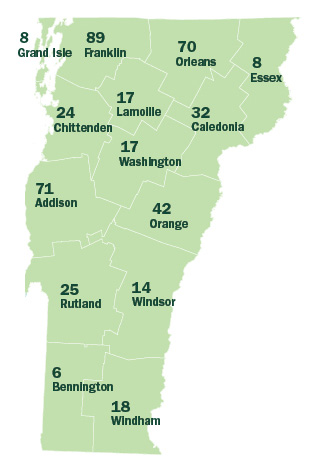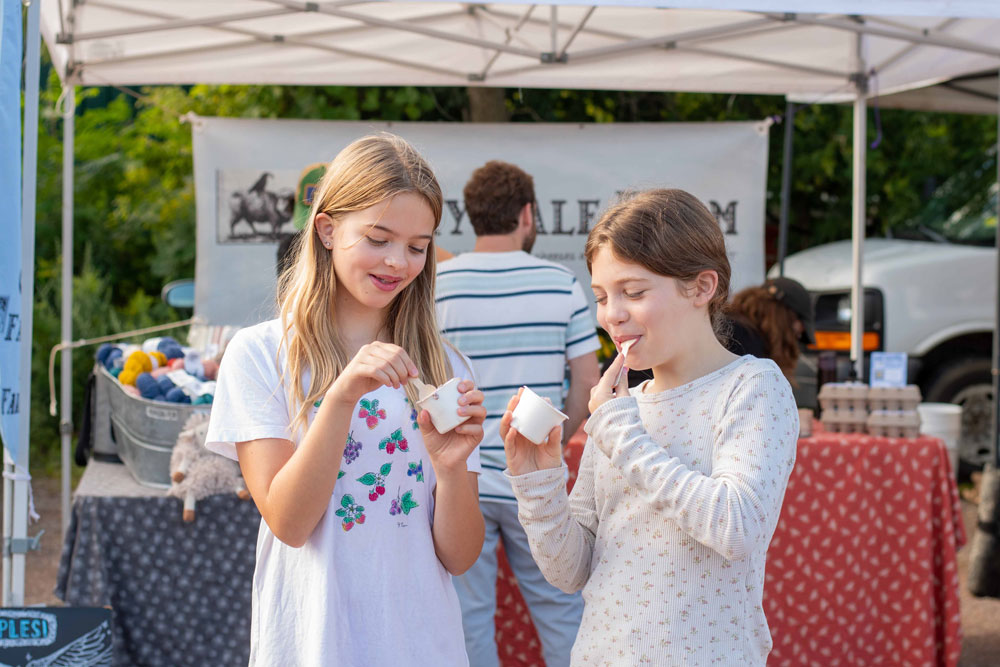Dairy is the backbone of Vermont’s agriculture industry. Resilient and dynamic, dairy has long defined our state, and it continues to innovate and evolve.
Over the past decade, dairy farmers have weathered volatile milk prices, flooding, and a global pandemic. But the future looks brighter for dairy farmers, thanks to strengthening milk prices and increased dairy consumption.
Vermont Dairy
at a glance
Dairy is an ever-evolving industry.
Farmers are using technology, sustainable practices, and consolidation to tackle challenges and embrace opportunities. Whether it’s by using health monitoring collars, manure injection technology or combining dairy operations, farmers are savvy and adaptive.
Long-term trends are favoring the productionof processed dairy products, such as cheese, yogurt, and butter. Consumption of dairy products is up, and cheese saw a record year in 2022. Farmers are also working with reduced feed prices while milk supply is lower than before, leading to stronger pricing.
Vermont Dairy Farm Trends
Dairy farms in Vermont are primarily located in the northern and central regions of the state. Franklin County, often referred to as Vermont’s dairy capital, has the highest concentration of dairy farms. It’s also the largest dairy producing county in New England.
Dairy Farms by County in 2024
Farm size trends reflect a decades-long trend of consolidation and expansion in American agriculture. Vermont is no different and has seen significant change in dairy farming trends which include farm acquisitions and mergers. While total farm numbers may be declining, overall milk production has remained relatively stable.

- Addison: 71
- Bennington: 6
- Caledonia: 32
- Chittenden: 24
- Essex: 8
- Franklin: 89
- Grand Isle: 8
- Lamoille: 17
- Orange: 42
- Orleans: 70
- Rutland:25
- Washington: 17
- Windham: 18
- Windsor: 14
Vermont Dairy Farm sizes at a glance
Decrease of
Vermont Dairy Farms
-49%
since 2013
(939 Dairy farms)
-34%
since 2018
(725 Dairy farms)
Increase of
Vermont Dairy Cows/Farm
+69%
since 2013
(142 cows per farm)
+37%
since 2018
(175 cows per farm)
Public Perception of Vermont Dairy

Vermonters are deeply connected to dairy farms and view them as vital to the state’s heritage and rural identity. Dairy farms evoke pride and nostalgia, symbolizing hard work, self-reliance, and the beauty of Vermont’s landscape.
Dairy is integral to the Vermont brand and a key contributor to the state’s reputation for quality, locally produced foods.
Residents value dairy’s role in maintaining Vermont’s rural character and working landscapes, as the industry supports local communities and preserves open farmland. Public support for sustainable and ethical dairy practices reflects broader trends among consumers who prioritize transparency and environmental stewardship.
A 2019 independent poll by Vermont Public Radio (VPR) and Vermont PBS (VTPBS) found tremendous public support for dairy in Vermont.



